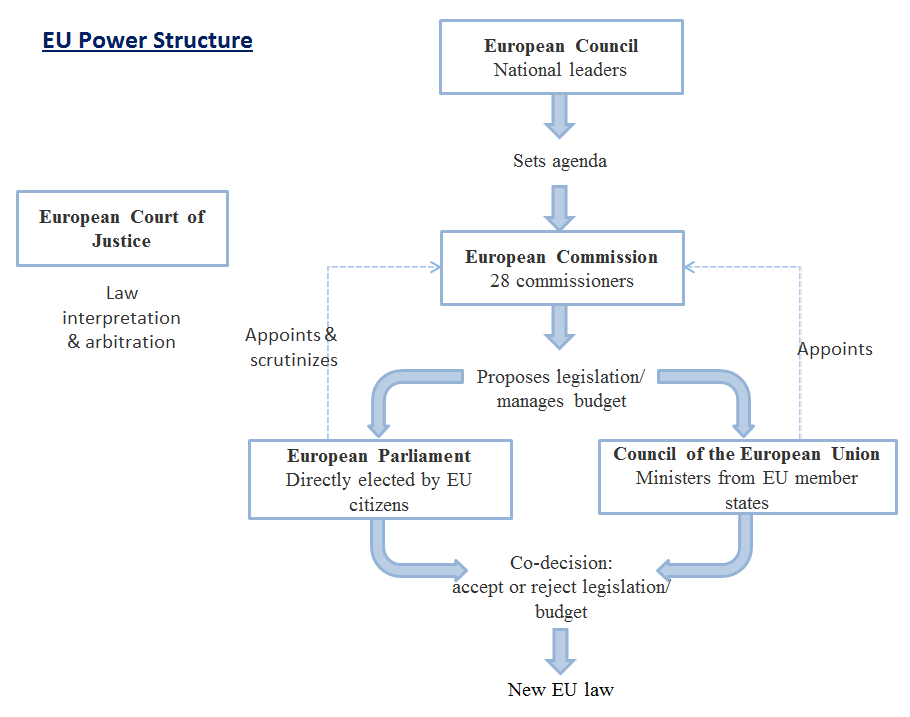Political Integration
Political integration is a constantly debated topic in Europe. Its process is slower than economic and social integration as it directly concerns state sovereignty. Some countries like the UK are skeptical about transferring too much power to Brussels. Nevertheless, there exists some progress over decades of development. Here are two examples.
Example 1: EU power structure
For details: How does the EU work
Of the four institutions mentioned above, the European Commission and the European Parliament can best exemplify the achievement of political integration in Europe so far. The European Commission consists of 28 commissioners, including one president. Although each EU member state has a commissioner of its own nationality in the European Commission, all commissioners are under oath to abandon their national interests and must work instead on behalf of the European Union. Disagreement between the European Commission and state leaders are therefore not uncommon.
The European Parliament is a publicly elected institution. Each term lasts for five years. For the latest term (2014-2019) the European Parliament has 751 members. They come from 28 EU member states and are directly elected by EU citizens. The European Parliament represents the second largest democratic electorate in the world (after India).
Example 2: Joining the EU
Candidate countries must be ready for EU political integration. Conditions are as follows:
- They must have institutions guaranteeing democracy, the rule of law, human rights and respect for and protection of minorities.
- They must have a functioning market economy and the capacity to cope with competition and market forces in the EU.
- They must have the ability to take on and implement effectively the obligations of membership, including adherence to the aims of political, economic and monetary union.
- They must have the consent of the EU institutions and EU member states.
- They must have the consent of their citizens – as expressed through approval in their national parliament or by referendum.
Appendix: History of the EU
| 1950 | On 9th May 1950, French Foreign Minister Robert Schuman gave a speech in which he publicly proposed the idea of a European Coal and Steel Community (ECSC). The objective was to establish long lasting peace in Europe. |
| 1951 | The ECSC was founded. Members were Belgium, the Federal Republic of Germany, France, Italy, Luxembourg and the Netherlands. |
| 1957 | These six countries set up another club, the European Economic Community (EEC), for deeper and broader cooperation. |
| 1973 | Denmark, Ireland and the United Kingdom joined the EEC. |
| 1981 | Greece joined the EEC. |
| 1986 | Portugal and Spain joined the EEC. |
| 1993 | The EEC was replaced by the European Union (EU). |
| 1995 | Austria, Finland and Sweden joined the EU. |
| 2002 | The euro (€) became the official currency of 12 EU countries (now 17). |
| 2004 | Czech Republic, Estonia, Cyprus, Latvia, Lithuania, Hungary, Malta, Poland, Slovakia and Slovenia joined the EU. |
| 2007 | Bulgaria and Romania joined the EU. |
| 2013 | Croatia became the 28th member state of the EU. |


